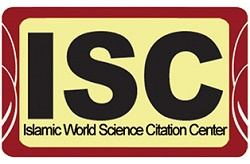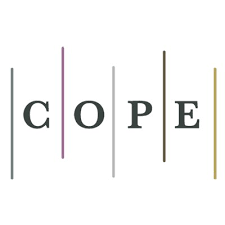Review and prioritization of investment projects in the Waste Management organization of Tabriz Municipality with a Rough Sets Theory approach
DOI:
https://doi.org/10.52547/ijimes.1.3.46DOR:
https://dorl.net/dor/20.1001.1.27832678.2021.1.3.4.8Keywords:
Rough Sets Theory, Investment, Projects, Tabriz Municipality Waste Management organizationAbstract
Purpose: Prioritization of investment projects is a key step in the process of planning the investment activities of organizations. Choosing the suitable projects has a direct impact on the profitability and other strategic goals of organizations. Factors affecting the prioritization of investment projects are complex and the use of traditional methods alone cannot be useful, so there is a need to use a suitable model for prioritizing projects and investment plans. The purpose of this study is to prioritize projects and investment methods for projects (10 projects) considered by the Waste Management Organization of Tabriz Municipality.
Methodology: The method of analysis used is the theory of rough, so that first the important investment projects in the field of waste management were determined using the research background and opinion of experts and the weight and priority of the projects were obtained using the Rough Sets Theory. Then, the priority of appropriate investment methods (out of 6 methods) of each project was obtained using Rough numbers, the opinion of experts and other aspects.
Findings: The result of the research has been that construction project of a specialized recycling town, plastic recycling project, and recycled tire recycling project are three priority projects of Tabriz Municipality Waste Management Organization, respectively. Three investment methods, civil partnership agreements, BOT, and BOO can be used for them.
Originality/Value: Tabriz Municipality Waste Management is an important and influential organization in the activities of the city, in which the investment methods in its projects are mostly based on common contracts and are performed in the same way for all projects. This research offers new methods for projects and their diversity according to Rough Sets technique.
Downloads
References
Christensen, T. H. (2011). Introduction to waste management. In Solid Waste Technology and Management (pp. 3-16). Wiley, ISBN (print): 978-1-405-17517-3.
Nahr, J. G., Nozari, H., & Sadeghi, M. E. (2021). Green supply chain based on artificial intelligence of things (AIoT). International Journal of Innovation in Management, Economics and Social Sciences, 1(2), 56-63. https://doi.org/10.52547/ijimes.1.2.56
Rhyner, C. R., Schwartz, L. J., Wenger, R. B., & Kohrell, M. G. (2017). Waste management and resource recovery. CRC Press. https://doi.org/10.1201/9780203734278.
Bufoni, A. L., Oliveira, L. B., & Rosa, L. P. (2016). The declared barriers of the large developing countries waste management projects: The STAR model. Waste management, 52, 326-338. https://doi.org/10.1016/j.wasman.2016.03.023
Samadi parviznejad, P., & Naser Akhavan, A. (2021). Impact of the Tourism Industry Scenarios in Urban Economy: (Case Study Tabriz): Impact of the Tourism Industry Scenarios. International Journal of Innovation in Management, Economics and Social Sciences, 1(1), 1–15. https://doi.org/10.52547/ijimes.1.1.1
Ghahremani Nahr, J., Ghodratnama, A., IzadBakhah, H. R., & Tavakkoli Moghaddam, R. (2019). Design of multi-objective multi-product multi period green supply chain network with considering discount under uncertainty. Journal of Industrial Engineering Research in Production Systems, 6(13), 119-137. DOI: 10.22084/ier.2017.8877.1421
Youssefi, H., Nahaei, V., & Nematian, J. (2011). A new method for modeling system dynamics by fuzzy logic: Modeling of research and development in the national system of innovation. Journal of Mathematics and Computer Science, 2(1), 88-99.
Thangavel, K., & Pethalakshmi, A. (2009). Dimensionality reduction based on rough set theory: A review. Applied soft computing, 9(1), 1-12. https://doi.org/10.1016/j.asoc.2008.05.006.
Pawlak, Z. (2002). Rough set theory and its applications. Journal of Telecommunications and information technology, 7-10, doi: bwmeta1.element.baztech-article-BPS2-0018-0017.
Pawlak, Z. (1998). Rough set theory and its applications to data analysis. Cybernetics & Systems, 29(7), 661-688. https://doi.org/10.1080/019697298125470
Nahaei, V. S., & Bahrami, M. (2021). Uncertainty analysis of business components in Iran with fuzzy systems: By comparing hypermarkets and Net markets. International Journal of Innovation in Management, Economics and Social Sciences, 1(1), 45-55. https://doi.org/10.52547/ijimes.1.1.45
Bazrafshan, M., & Nahaei, V. S. (2010). Failure prevention in work study projects with utilizing six sigma methodology, doi: http://innomet.ttu.ee/daaam10/proceedings/PDF/Bazrafshan.pdf
Albuquerque, L. G., de Oliveira Roque, F., Valente-Neto, F., Koroiva, R., Buss, D. F., Baptista, D. F., ... & Pinto, J. O. P. (2021). Large-scale prediction of tropical stream water quality using Rough Sets Theory. Ecological Informatics, 61, 101226. https://doi.org/10.1016/j.ecoinf.2021.101226.
Ferretti, P., Zolin, M. B., & Ferraro, G. (2020). Relationships among sustainability dimensions: evidence from an Alpine area case study using Dominance-based Rough Set Approach. Land Use Policy, 92, 104457. https://doi.org/10.1016/j.landusepol.2019.104457.
Yazdani, M., Tavana, M., Pamučar, D., & Chatterjee, P. (2020). A rough based multi-criteria evaluation method for healthcare waste disposal location decisions. Computers & Industrial Engineering, 143, 106394. https://doi.org/10.1016/j.cie.2020.106394.
Gao, Q., & Ma, L. (2021). A novel notion in rough set theory: Invariant subspace. Fuzzy Sets and Systems. https://doi.org/10.1016/j.fss.2021.08.023.
Luo, C., Ju, Y., Dong, P., Gonzalez, E. D. S., & Wang, A. (2021). Risk assessment for PPP waste-to-energy incineration plant projects in china based on hybrid weight methods and weighted multigranulation fuzzy rough sets. Sustainable Cities and Society, 74, 103120. https://doi.org/10.1016/j.scs.2021.103120.
Geetha, N. K., & Bridjesh, P. (2021). Combinatorial rough neutrosophic multi attribute decision making approach for selection of waste plastic oil–Diesel blends. Materials Today: Proceedings, 37, 979-981. https://doi.org/10.1016/j.matpr.2020.06.186.
Kang, X. (2021). Combining rough set theory and support vector regression to the sustainable form design of hybrid electric vehicle. Journal of Cleaner Production, 304, 127137. https://doi.org/10.1016/j.jclepro.2021.127137.
Yu, H., Yang, G., Lin, M., Meng, F., & Wu, Q. (2018). Application of rough set theory for NVNA phase reference uncertainty analysis in hybrid information system. Computers & Electrical Engineering, 69, 893-906. https://doi.org/10.1016/j.compeleceng.2018.02.009.
Sharma, S., Dua, A., Singh, M., Kumar, N., & Prakash, S. (2018). Fuzzy rough set based energy management system for self-sustainable smart city. Renewable and Sustainable Energy Reviews, 82, 3633-3644. https://doi.org/10.1016/j.rser.2017.10.099.
Hou, C., Chen, H., Long, R., Zhang, L., Yang, M., & Wang, Y. (2021). Construction and empirical research on evaluation system of green productivity indicators: Analysis based on the correlation-fuzzy rough set method. Journal of Cleaner Production, 279, 123638. https://doi.org/10.1016/j.jclepro.2020.123638.
Li, T., Li, Z., Zhao, W., Li, X., Zhu, X., Pan, S., ... & Li, J. (2020). Analysis of medical rescue strategies based on a rough set and genetic algorithm: A disaster classification perspective. International Journal of Disaster Risk Reduction, 42, 101325. https://doi.org/10.1016/j.ijdrr.2019.101325.
Ghahremani Nahr, J., Kian, R., & Rezazadeh, H. (2018). A modified priority-based encoding for design of a closed-loop supply chain network using a discrete league championship algorithm. Mathematical problems in engineering, 2018. https://doi.org/10.1155/2018/8163927.
Li, J., Fang, H., & Song, W. (2018). Sustainability evaluation via variable precision rough set approach: A photovoltaic module supplier case study. Journal of Cleaner Production, 192, 751-765. https://doi.org/10.1016/j.jclepro.2018.04.248.
Lai, X., Liu, J., & Georgiev, G. (2016). Low carbon technology integration innovation assessment index review based on rough set theory–an evidence from construction industry in China. Journal of Cleaner Production, 126, 88-96. https://doi.org/10.1016/j.jclepro.2016.03.035.
Li, J., Fang, H., & Song, W. (2019). Sustainable supplier selection based on SSCM practices: A rough cloud TOPSIS approach. Journal of cleaner production, 222, 606-621, https://doi.org/10.1016/j.jclepro.2019.03.070.
Raza, M. S., & Qamar, U. (2017). Understanding and using rough set based feature selection: concepts, techniques and applications. Springer Singapore, ISBN: 978-981-32-9166-9.
Yang, X., & Yang, J. (2012). Incomplete information system and rough set theory. Models and attribute reductions. Science Press: Springer., ISBN: 978-3-642-25935-7.
Zhang, Q., Xie, Q., & Wang, G. (2016). A survey on rough set theory and its applications. CAAI Transactions on Intelligence Technology, 1(4), 323-333. https://doi.org/10.1016/j.trit.2016.11.001.
Nowicki, R. K. (2019). Rough set theory fundamentals. In Rough Set–Based Classification Systems (pp. 7-16). Springer, Cham, DOI: 10.1007/978-3-030-03895-3_2.
Czaja, L. (2019). Rough Cause-Effect Structures. In Cause-Effect Structures (pp. 39-44). Springer, Cham, doi: 10.1007/978-3-030-20461-7_5.
Zhai, L. Y., Khoo, L. P., & Zhong, Z. W. (2008). A rough set enhanced fuzzy approach to quality function deployment. The International Journal of Advanced Manufacturing Technology, 37(5-6), 613-624. https://doi.org/10.1007/s00170-007-0989-9.
Qian, Y., Liang, X., Wang, Q., Liang, J., Liu, B., Skowron, A., ... & Dang, C. (2018). Local rough set: a solution to rough data analysis in big data. International Journal of Approximate Reasoning, 97, 38-63. https://doi.org/10.1016/j.ijar.2018.01.008.
Nahaei, V. S., Novin, M. H., & Khaligh, M. A. (2021). Fuzzy clustering of investment projects in Tabriz Municipality Waste Management Organization with ecological approach. International Journal of Innovation in Management, Economics and Social Sciences, 1(2), 28-42. https://doi.org/10.52547/ijimes.1.2.28
Published
How to Cite
Issue
Section
License
Copyright (c) 2021 Vahid Saeid Nahaei, Mohammadali Habibizad Novin, Mahdi Assadi Khaligh

This work is licensed under a Creative Commons Attribution 4.0 International License.












